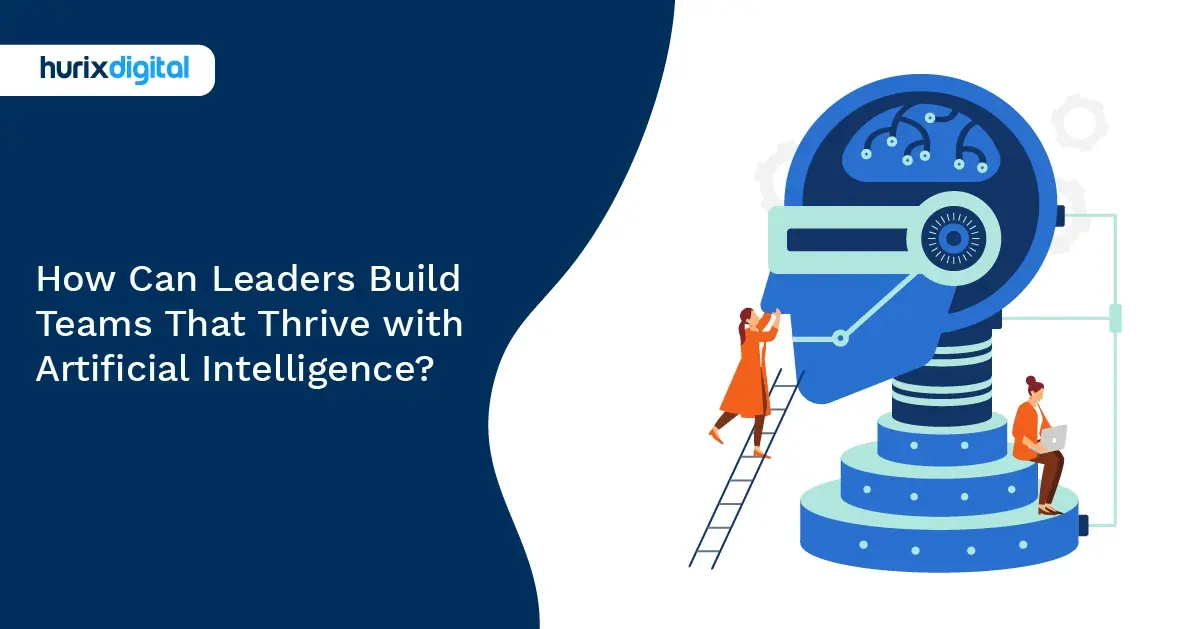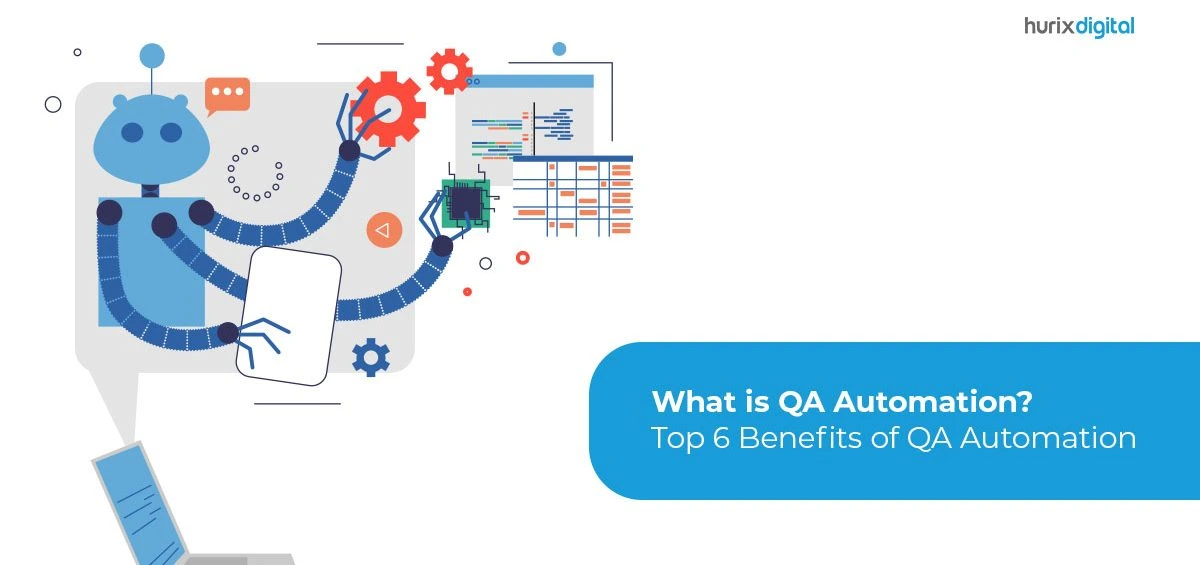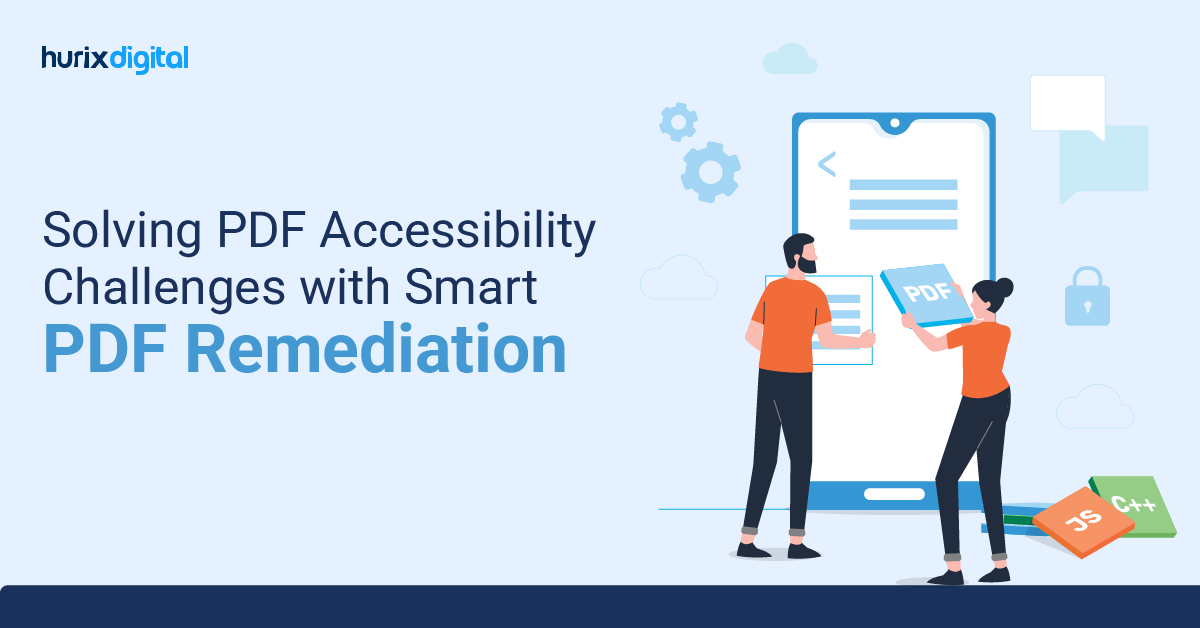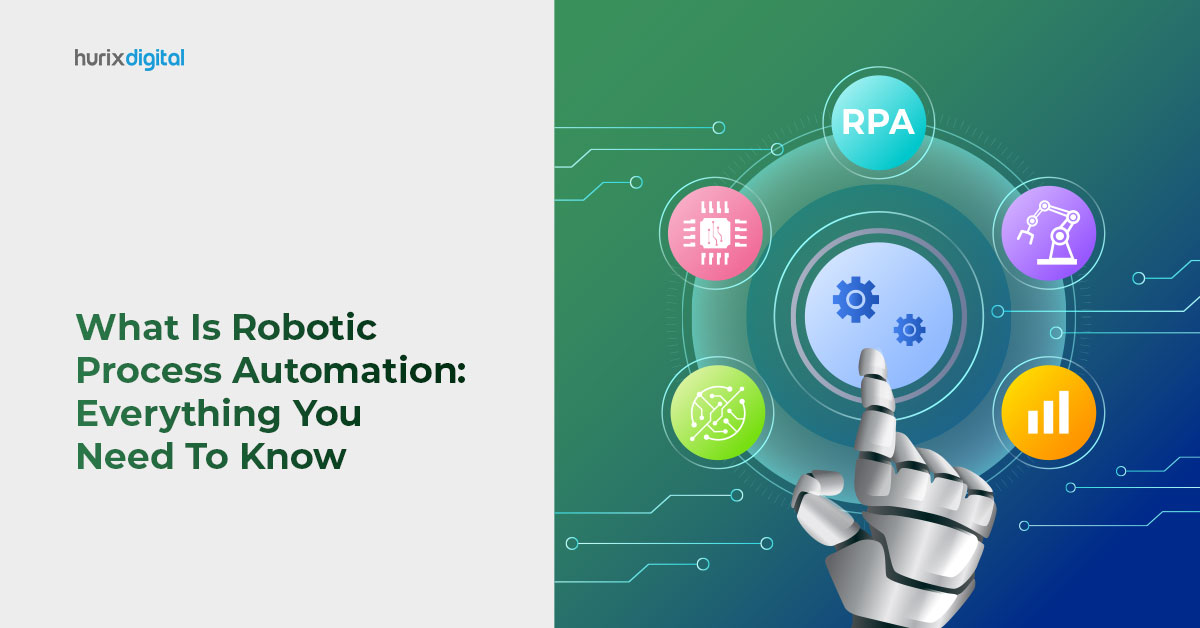
How Can Leaders Build Teams That Thrive with Artificial Intelligence?
Summarize with:
There’s a quiet hum in the background of every executive meeting these days: AI services. Many senior leaders promise a fundamental shift in how an organization functions and generates value. But then the questions inevitably surface, often quickly. It’s not just about the technical components but the far messier aspects of true integration.
Is it possible to integrate these capabilities without making them just another expensive, underused project? What about the fundamental assurance that the underlying data is both pristine and secure? How prepared are people for this transformation, or will it feel like an added burden, causing friction rather than efficiency? Rather than simply choosing a provider, it is about redefining productivity and rethinking workflows.
Table of Contents:
- How to Strategically Integrate AI Services Effectively?
- What Measurable ROI Can AI Services Deliver?
- How to Ensure Data Privacy and Quality for AI Services?
- What Talent Gaps Exist for Successful AI Service Adoption?
- How to Choose the Right AI Service Provider?
- How Can AI Services Scale with Enterprise Growth?
- What Ethical AI Governance Frameworks are Crucial for Leaders?
- How to Mitigate Security Risks in AI Service Deployment?
- How to Drive Enterprise-Wide AI Service Adoption and Cultural Shift?
- What Emerging AI Service Trends Should Leaders Monitor?
- Final Thoughts
How to Strategically Integrate AI Services Effectively?
The best way to bring AI into your work doesn’t start with a flashy gadget or viral TikTok demo. It begins with simply watching how your team spends its hours. A seasoned professional often starts by asking, “Where’s the friction? What task drains the team’s energy, day after monotonous day?” It’s rarely about a grand, top-down mandate. It’s typically about finding nagging inefficiencies, like data entry nightmares and endless email sorting. Think of it less as “AI integration” and more as “intelligent delegation.”
Once a clear pain point is identified, that’s when you might consider a small, contained pilot. Not a company-wide overhaul, goodness no. That’s a recipe for chaos and disillusioned employees. Instead, pick a single department, maybe even just a few people, and try a modest AI service to tackle one specific problem. It’s like testing a recipe in a small batch before cooking for a banquet. Did it save time? Did it make the job less soul-crushing? Did it break something else unexpectedly? We learn more from what stumbles than what sails perfectly.
The other quiet truth? The quality of your data will make or break any AI effort. One can buy the most sophisticated AI service on the market, but if one feeds it garbage, it will enthusiastically spit out more garbage. It’s a foundational truth often overlooked. Clean up your house first. It takes discipline, a bit of grunt work, but it’s non-negotiable.
In the end, it is a recurrent process. It’s not a wizard’s wand or set, and leave it. You launch, you monitor, you perfect, you take corrective actions. It requires patience, the willingness to acknowledge when something is wrong, and the courage to make a change. It is not a master plan document, as much as it is constant, small-scale experimentation.
What Measurable ROI Can AI Services Deliver?
People often wonder, “How can I make sure that the money I am using on AI is actually paying off?” They aren’t satisfied with vague talk about faster processes or sharper insights. They want cold, hard figures that show revenue rising or costs falling as a direct result, and that’s totally reasonable. Any smart manager will tell you that throwing cash at shiny tech just for fun is more like a weekend hobby than a good business move.
Reflect on the tedious and repetitive tasks that make daily operations difficult. Usually, such tasks include data entry, routine customer inquiries, or searching through vast piles of documentation. As soon as AI technology takes over these tasks, the idea is not to replace people. Instead, it is more about the efficient use of human work hours. Say the AI bot solves 80% of tier-1 support inquiries, thus leaving only complex issues to be resolved by human agents.
The ROI encompasses not only cost reduction for employees but also improved customer satisfaction through quicker resolutions, happier, script-unbounded agents, and a greater propensity for upselling or cross-selling, particularly when only the most skilled agents have extra room for maneuver. You measure: average handle time, first-call resolution rates, and customer churn. It can be quantified.
Or take predictive maintenance in a manufacturing setting. A machine learning model analyzes sensor data, noticing subtle anomalies before a critical component fails. The alternative? Unscheduled downtime. That’s a nightmare. Lost production, emergency repair costs, and potential missed deadlines. Suppose that the model predicts a failure two weeks in advance, allowing for planned maintenance during off-hours. In that case, the return is stark: fewer costly outages, extended equipment life, and a more stable production schedule. You measure uptime, maintenance costs, and scrap rates.
So, while the initial investment can seem hefty, the real question isn’t “Can AI deliver ROI?” It’s “Where exactly are we looking for it, and how precisely are we measuring the before and after?” You know, normally, the biggest profits may be behind the scenes, not exactly evident, for example, a quiet running system or a change in customer preference. It requires a thorough and analytical review of your business issues and profit prospects. This is a practical, simple act without any deception, just plain observation and measurement of the results.
How to Ensure Data Privacy and Quality for AI Services?
People often say AI needs data the way a plant needs water, and that’s pretty spot on. The tougher job, however, isn’t about piling up bytes; it’s making sure the info is clean and, even more important, that no one’s privacy gets misused. Picture it as a careful dance. You strive for clean records to keep the machine from dreaming up wild nonsense, yet every step toward perfection bumps up against someone’s right to keep their story completely their own.
When we talk about quality for AI services, it’s not just about clearing typos or correcting missing entries. That’s the baseline. It’s about ensuring the data reflects reality accurately and consistently for the task at hand.
Picture an AI set up to spot weird readings from factory sensors. If the training info mixes sensors that were tweaked in different ways or slips in hours when machines were shut down but no one marked it, the system starts seeing phantoms-and, even worse, ignores real faults. Fixing that mess takes a lot of time: double-checking records, lining up data side by side, and usually getting a human to step in. Somebody has to study those tricky cases and decide what’s off instead of just letting an algorithm hit the big red Fix button. That’s when the idea that cleaning data is only a tech job starts to crumble.
What Talent Gaps Exist for Successful AI Service Adoption?
AI is often associated with data scientists and machine learning engineers. While those roles are important, the real friction, the common issues, often appear elsewhere. It’s less about building a fancy algorithm and more about making it actually work for people and their purposes.
The translator is one of the most important components of most AI projects. It links the messy world of business with the shiny world of technology. Every team has seen the scene: a boss suddenly wants AI to “make sales soar,” and the data crew jumps straight into code without untangling the actual sales drama. Or it might be that the scientists create an utterly dazzling tool that no marketer, seller, or executive can understand. It feels like those travel stories where you try to ask for directions in a language app, yet everyone ends up more confused. This job isn’t the same as a project manager ticking off tasks; it’s a strategist with real empathy who listens to a marketing head, lands the core issue, and then writes that issue in specs that an AI coder gets.
And when the code is done, the translator flips the story back so the business team knows what went where and why they should care. People with that rare mix of skills are hard to find.
Finally, and perhaps most overlooked, is the ongoing care and feeding of these AI systems. While people tend to focus on the initial build, they often overlook the fact that AI models degrade over time. What was true yesterday might not be true tomorrow. This isn’t like deploying traditional software. It requires continuous monitoring, retraining, and sometimes, a complete overhaul. Keeping the lights on, ensuring performance, and identifying drift is a specialized skill. It’s less glamorous than building, but critical for sustained value. Without it, your clever AI becomes a digital relic, gathering dust.
How to Choose the Right AI Service Provider?
When a business looks to bring in an AI service provider, the common impulse is to pore over impressive case studies and dazzling technical specifications. But a thoughtful leader knows it’s rarely about the shiny demo; it’s about a deeply human understanding of a problem. Does this provider truly grasp your specific challenge, with all its inherent messiness, or are they just looking for another nail for their favorite hammer?
Consider the ‘listen’ test. A truly effective provider often asks more pointed questions than they answer initially. They’ll probe your existing workflows, the data you don’t think is relevant, even the ingrained habits of your team. Sometimes, an honest assessment of whether AI is even the best solution for your immediate needs can provide a refreshing dose of reality.
Then there’s the proof. Do not fall for those shiny testimonials of large companies; request precise stories of projects that faced real obstacles. What did they do when the quality of the data turned out to be bad? Which unexpected technical challenges have occurred in it, and how were these managed? A provider who is offering you a flawless success story may be drawing a false image. AI application in the real world is usually loopy and somewhat unruly. What is more important than a perfect pitch deck is how they handled imperfections.
How Can AI Services Scale with Enterprise Growth?
Growth is the dream, right? But your AI better keep up. A system that works for 10 schools might choke at 100. Cloud’s your friend here. It’s flexible, stretchy, and does not lead to steep hardware bills.
Strategy’s half the battle. Map it out: where’s your enrollment headed? What’s your tech stack look like in five years? We have seen firms scale too fast and crash with their servers lagging and AI hallucinating poor answers. Bring IT in early. They’ll tell you if your pipes can handle the flood.
What Ethical AI Governance Frameworks are Crucial for Leaders?
When people talk about ethical AI governance, they often use a lot of acronyms and checklists for compliance. But don’t worry about it too much. So, what do leaders need? It’s not enough to check off boxes; we need to give machines that learn and grow a moral compass. Instead of strict frameworks, think of it as the base of a complicated building whose design is constantly changing.
A leader must first grapple with clarity: transparency and explainability. Can we really understand why the AI made that decision? It’s like asking your smartest engineer how he fixed a pertinent problem; you need more than just the answer. You need the rationale. Without that, trust erodes, whether it’s in a loan application or a medical diagnosis. It might seem that simple audit trails are sufficient, but true explainability demands an ongoing commitment to exposure, even when it is uncomfortable. It’s tough. Sometimes, the AI truly learns in ways we didn’t explicitly code, and articulating that path is a challenge, a genuine limitation we face.
Finally, accountability. Who has come up as the owner of the decision? It can not be a machine or software. A responsible leader also makes sure that there is a human in the loop, and responsibility is returned to a person or team through the output of the algorithm. It is a radical change to the way software development has always occurred, where bugs will be rectified; this is a situation that requires a different sort of reflection. Advanced systems have to be surrounded by human protection against AI fallibility.
How to Mitigate Security Risks in AI Service Deployment?
There is an element of security that needs to be considered when putting AI models into the wild. It becomes a fundamental, almost nagging worry about everything that could possibly go awry. Think about the very foundation: the data. Is it clean? Has it been tampered with? There was a project, not long ago, where a subtle data poisoning, not malicious initially, but just flawed data collection, nearly skewed an entire predictive maintenance system. Rather than stealing information, it was subtly corrupting trust in the AI’s results. It’s way different from the usual network hack.
The deployment environment is a classic battleground, but with AI, the stakes often feel significantly higher. Access controls become paramount. Who can retrain the model? Who is authorized to push updates?
The model itself can be exfiltrated in a matter of seconds with one slip, one misconfigured credential. Or, even worse, to inject a backdoored version. It’s about protecting the very “brain” of an organization’s AI, not only the data.
Watching server logs may sound like the main job, but the real work is spotting odd model behaviour-predictions that seem random, steep drops in confidence, and anything else that feels off. You can’t simply stare at these numbers; you also have to tune your ear to what the model is quietly saying, because it sometimes talks louder than any alert. It’s not a single checklist item, either. No magic patch fixes everything, so data scientists need some security know-how, while security people have to grasp where models can be brittle and break.
How to Drive Enterprise-Wide AI Service Adoption and Cultural Shift?
An effort to shift workplace culture toward artificial intelligence will stall whenever leaders treat the initiative like a standard tech launch instead of a people-first change. The fanciest, priciest AI system sits idle on the server if employees refuse to trust it or weave it into their daily tasks.
Success starts with addressing fear honestly. Employees fear AI will replace them. Though sometimes this is justifiable. Pretending otherwise insults intelligence. Better to acknowledge AI will change jobs than demonstrate how it makes work more interesting. Champions at every level accelerate adoption faster than any top-down mandate. Not just senior executives preaching transformation, but respected middle managers and frontline workers who become AI advocates.
Training must be practical, not theoretical. Skip the machine learning seminars. Show people exactly how AI helps their specific job today. Remember that the incentives drive behavior. If you want AI adoption but reward old metrics, guess which wins? One insurance company restructured bonuses to reward claims processors who effectively collaborated with AI systems, not just those processing the most claims. Quality improved, fraud decreased, and AI adoption soared.
What Emerging AI Service Trends Should Leaders Monitor?
The AI world changes almost daily, yet a few headline trends really matter to executives. One of these is Edge AI, which runs smart algorithms close to devices instead of funneling everything to a faraway cloud; this shift could redefine business operations and customer experiences.
Federated learning enables AI to learn without storing all its data in one place, a trend becoming increasingly common worldwide. Hospitals work together on AI models to diagnose rare diseases without sharing patient data. Manufacturers improve quality control at all of their facilities without giving away trade secrets. This trend is speeding up as companies realize that working together doesn’t always mean sharing data.
Most importantly, watch for AI services becoming invisibly embedded in workflows that users forget they’re using AI. The most successful technologies disappear into the background while benefits remain prominent. When employees stop talking about “using AI” and simply discuss doing their jobs better, transformation is complete.
Executives need to constantly learning about AI services to work. Technology changes too swiftly for anyone to be an expert in it. Keep being curious, ask questions all the time, and remember that every algorithm is founded on a human need that has to be served better.
Final Thoughts
The boardroom conversations about AI services don’t have to end in confusion. Every question we’ve looked at in this blog, from how to integrate systems to how to run a business ethically, is a choice that can make the difference between a company that does well and one that just gets by.
When it comes to AI transformation, it’s not important to have all the solutions right away. Rather, it’s important to ask the right questions and identify people who have been through this before. The execs who are doing well with AI share are the ones who stopped waiting for the right time and started making smart moves.
At Hurix Digital, we’ve guided organizations through every challenge discussed here. We don’t just implement AI services; we help you think through the tough questions first. Our teams have wrestled with data privacy concerns, built bridges between technical and business teams, and helped companies measure real ROI.
Let’s start a conversation about what AI services can actually do for your business. Because the best time to start your AI journey was yesterday. The second-best time is now!
Summarize with:

Vice President – Content Transformation at HurixDigital, based in Chennai. With nearly 20 years in digital content, he leads large-scale transformation and accessibility initiatives. A frequent presenter (e.g., London Book Fair 2025), Gokulnath drives AI-powered publishing solutions and inclusive content strategies for global clients
 Upcoming Masterclass | Build an Army of Brand Evangelists using Training & Development | November 20th, 8:30 AM PDT | 11:30 AM EDT | 10:00 PM IST
Upcoming Masterclass | Build an Army of Brand Evangelists using Training & Development | November 20th, 8:30 AM PDT | 11:30 AM EDT | 10:00 PM IST




